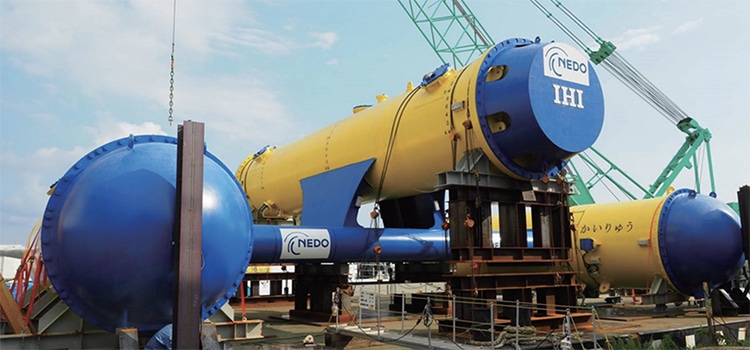(Photo:IHI Corporation)
Our planet’s oceans are invaluable.
They shelter precious ecosystems, cool the planet, and are beautiful to look at.
Thier waters also hold largely untapped power reserves.

The Kairyu turbine. (Photo:IHI Corporation)
Kairyu roughly translates to ocean current in Japanese.
Made of pressure-resistant steel, the machine has to withstand rough waters.
It is deigned to float, tethered, about 164 feet below the surface.

The Kairyu turbine. (Photo:IHI Corporation)
As the surface currents churn the blades, they rotate in opposite directions, thereby stabilizing the tethered turbine.
It can maneuver itself, too, to catch the strongest current.
After a three-and-a-half year test run in the ocean, Kairyu can produce 100 kilowatts of power.

Conceptual diagram of a floating ocean turbine in a current. (Photo:IHI Corporation)
This is significantly lower than the average offshore wind turbine’s 3.6 megawatts.
However, researchers think they could create a larger model which produces 2 megawatts.
The Kuroshio current could produce about 205 gigawatts of energy, potentially outstripping Japan’s present energy production.
Eventually, farms of ocean turbines may soon lurk beneath the surface of our oceans.
Conceptual diagram of a floating ocean turbine in a current.